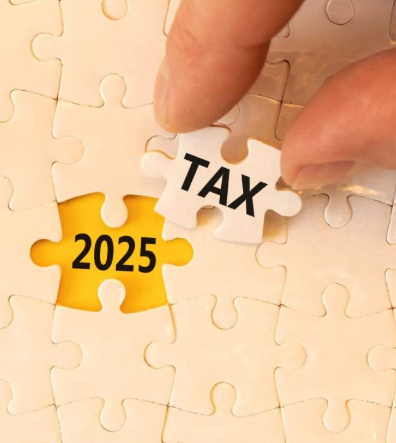If you’re self-employed in the UK, understanding your income tax obligations is crucial to managing your finances effectively. Unlike employees whose taxes are automatically deducted, self-employed individuals must handle their taxes through Self Assessment. In this guide, we’ll break down the income tax rates, allowances, and National Insurance contributions for the 2025/26 tax year to help you navigate your tax responsibilities.
What Is Self-Employed Income Tax?
As a self-employed individual, whether you’re a sole trader or part of a partnership, you are required to pay income tax on the profits you make through Self Assessment. This applies to company directors as well, who pay taxes on their salary and dividends.
If your self-employment income is below £1,000, it’s tax-free, thanks to the UK’s trading allowance. For comparison, employees have taxes automatically deducted through Pay As You Earn (PAYE). As a self-employed person, you need to report your earnings, including profits from your business and income from other sources, and file your tax return accordingly.
How Much Tax Will You Pay on Self-Employed Income?
The amount of tax you owe depends on several factors:
- Total Taxable Income: This is your total earnings, including any self-employed profits.
- Personal Allowance: The amount of income you can earn tax-free.
- Income Tax Bands: These determine how much tax you pay on different income levels.
For example, if you have income from both self-employment and a regular job, your total income will be combined to determine your tax bracket. The tax on your job income is typically handled through PAYE, while you report self-employment income through Self Assessment.
Self-employed individuals pay taxes on their trading profits, which is the money made from the business after allowable expenses have been deducted. These profits, along with any other income, help determine which income tax band you fall into.
To estimate your tax obligations, HMRC offers an online tool called the “Self-employed ready reckoner,” which can help give you an idea of how much you owe. However, for more complex tax situations, it might be best to consult a tax professional.
In addition to income tax, self-employed individuals are also subject to taxes on dividends and capital gains, depending on their specific circumstances.
Self-Employed Income Tax Rates for the 2025-2026 Tax Year
For the 2025-2026 tax year, self-employed individuals will pay taxes on their profits based on the following rates:
- Personal Allowance: Up to £12,570 – 0% tax
- Basic Rate: £12,571 to £50,270 – 20% tax
- Higher Rate: £50,271 to £125,140 – 40% tax
- Additional Rate: Over £125,140 – 45% tax
Note that the Personal Allowance has remained at £12,570 since the 2021/2022 tax year and is expected to stay at this level at least until 2028. However, if your income exceeds £100,000, the Personal Allowance is reduced by £1 for every £2 earned above that threshold.
How the Personal Allowance Works for the Self-Employed
The Personal Allowance works by reducing your taxable income, which means you won’t pay tax on the first £12,570 of your earnings. However, this allowance decreases if your income exceeds £100,000. This reduction means you will pay more tax, as you will have less of your income that is tax-free.
There are also some specific allowances that self-employed individuals may qualify for, depending on their situation, such as allowances for blind individuals or married couples under certain conditions.
Other Allowances for the Self-Employed
Besides the Personal Allowance, there are two additional allowances that may help reduce your tax bill:
- Trading Allowance:
The Trading Allowance allows self-employed individuals with small amounts of trading income to avoid paying tax on income up to £1,000. If your total trading income is less than £1,000, it’s entirely tax-free. If your income exceeds £1,000, you can deduct the £1,000 allowance from your total income. However, you cannot claim both the allowance and deduct actual business expenses. - Property Allowance:
Similar to the Trading Allowance, the Property Allowance applies to income from renting property, such as renting out a room or garage. If your income is less than £1,000, it’s tax-free. If it’s above £1,000, you can claim the allowance or deduct actual expenses, but not both.
Self-Employed National Insurance Contributions (2025-2026)
Self-employed individuals are also responsible for National Insurance Contributions (NICs). For the 2025-2026 tax year, Class 2 NICs have been abolished, and Class 4 NICs now apply. Here are the key thresholds and rates:
- Small Profits Threshold (SPT): £6,725 – No NICs, but you’ll receive National Insurance credits.
- Lower Profits Limit (LPL): £12,570 – No NICs.
- Class 4 NICs:
- 6% on profits between £12,570 and £50,270
- 2% on profits above £50,270
Filing Your Self-Assessment Tax Return
Once you start earning from self-employment, you need to register with HMRC for Self Assessment. Registration can be done online, by post, or through accounting software. Once registered, you’ll receive a Unique Taxpayer Reference (UTR), which you’ll need when filing your tax return.
If your profits exceed the Lower Profits Limit (£12,570), you will pay Class 4 NICs. If your profits are above the Small Profits Threshold (£6,725), you’ll receive National Insurance credits even though Class 2 NICs are abolished.
Conclusion
As a self-employed individual, understanding your income tax and National Insurance obligations is vital for ensuring that you meet your financial responsibilities. With the right planning, you can reduce your tax burden and maximize your allowances. Be sure to stay informed about the available tax deductions and contributions that apply to your business.
If you have any doubts or your tax situation is more complicated, consulting a tax professional is a good way to ensure you’re paying the correct amount.



